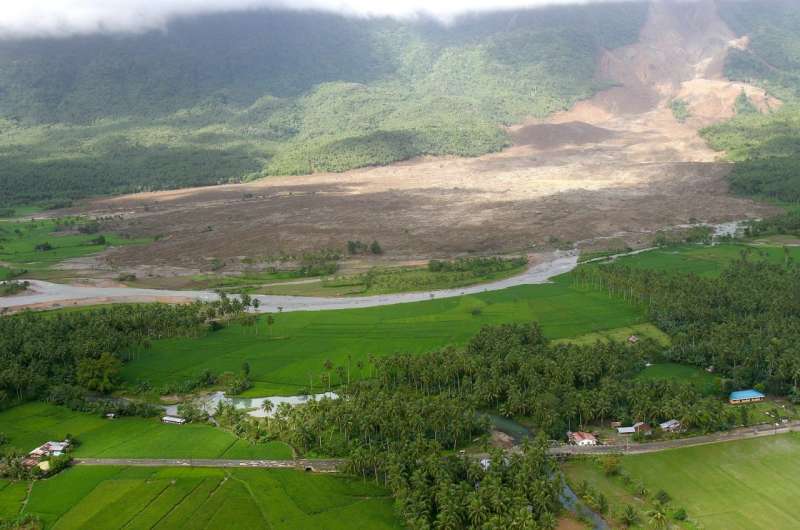New numerical method makes simulating landslide tsunamis possible

Researchers from Tohoku University have developed a new numerical method that paves the way for simulating landslide tsunamis.
Their research was published in the journal Computational Mechanics on May 13, 2021.
Landslides occurring on land or underneath the sea—known as subaerial and submarine landslides respectively—can cause devastating tsunamis. They also pose other hazards such as severing submarine cables and pipelines.
Yet the mechanisms at play behind these landslides are less well understood, partly due to the multifaceted interactions taking place: a collapse of the seabed and/or the interaction between soil and water. Conventional approaches make it difficult to predict the behaviors of soil and seawater with high accuracy.
The researchers' breakthrough proposes a new hybrid simulation method that can express the complex interaction between soil structures—referred to as granular masses—and liquids.
"Our novel method couples together two computational methods that analyze the interactions of solids and liquids: the finite element method (FEM) along with the material point method (MEM)," said Kenjiro Terada, professor at Tohoku University's International Research Institute of Disaster Science and co-author of the study.
Using the newly created algorithm, the researchers were able to simulate a wave mimicking a submarine granular collapse and a wave induced by a subaerial slide over an inclined plane. To their delight, the simulations were in reasonable agreement with the numerical measurements.
Several numerical examples also revealed that the proposed method can be applied to other types of potentially dangerous natural events that involve the interaction of air, water, and solids.
Looking ahead, Terada and his team aim to improve the accuracy of their experimental measurements and apply it to larger-scale real data.
More information: Shaoyuan Pan et al. MPM–FEM hybrid method for granular mass–water interaction problems, Computational Mechanics (2021). DOI: 10.1007/s00466-021-02024-2
Provided by Tohoku University



















